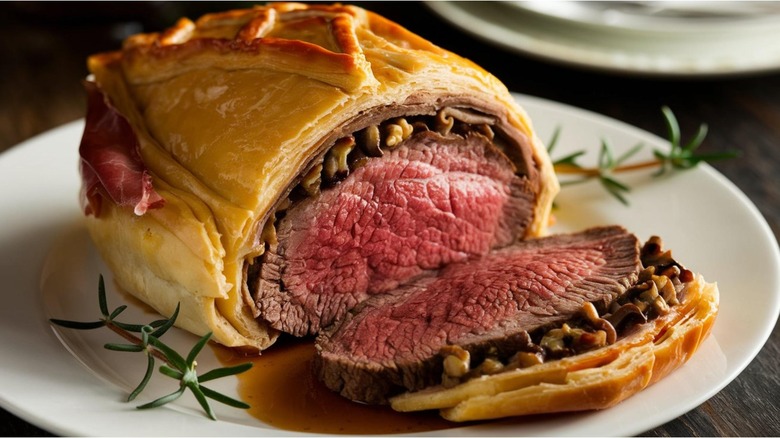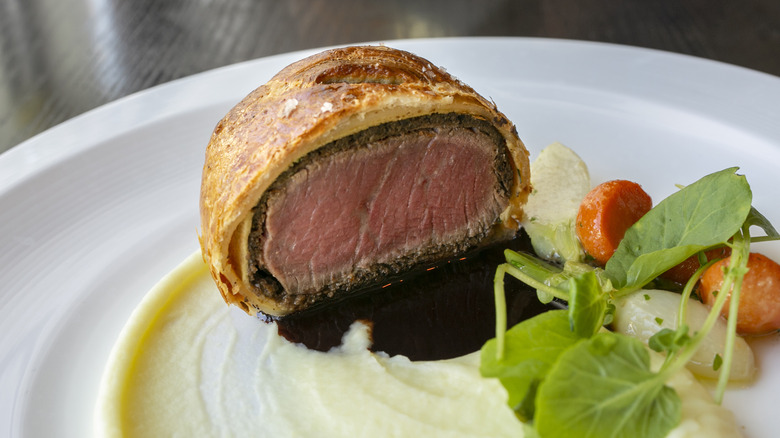What Cut Of Steak Should You Use When Making Beef Wellington?
For a showstopping dinner party centerpiece, nothing beats a homemade beef Wellington. It can be a daunting dish for home cooks because there are so many different elements to get right. But since the beef is the star, it's essential to start with the right cut of steak — and for beef Wellington, that's tenderloin.
There are several reasons why this particular cut works so well. It's supremely tender because the tenderloin muscle doesn't get much exercise, so you get lean beef that is buttery soft and easy to slice into portions when cooked. The lack of fat means a less rich and robust taste than some other cuts of steak such as a ribeye — but this actually works well for beef Wellington.
The other ingredients in the dish — such as salty Parma ham, earthy mushroom duxelles, luxurious pâté, and crisp golden pastry — also get a chance to shine without being overpowered by sheer beefiness. The result is layer upon layer of deliciously complementary flavors.
It's not just about the taste and texture, however. The tenderloin is also the most practical and foolproof cut for a Wellington, thanks to its cylindrical shape. This means it cooks evenly while looking neat, and delivers equal-sized portions for serving. But for the absolute best results, you'll want to opt for a specific part of the tenderloin when you're choosing the perfect steak at the store or butcher shop: the châteaubriand.
Choose center-cut tenderloin for a superior slice of Wellington
The full tenderloin muscle is a long piece of meat (up to 24 inches in length), but it's not shaped like a uniform cylinder the whole way along. Rather, it becomes wider towards the back of the animal, which risks uneven cooking. While the whole thing could easily serve eight to 12 people, a better choice for beef Wellington is the châteaubriand part.
Also known as center-cut tenderloin because it comes from the middle, châteaubriand has a much neater and more consistent shape. It can serve up to six people — but if you're feeding a larger crowd, you could always prepare multiple Wellingtons. Or if you'd rather serve individual beef Wellingtons for each person rather than for sharing, you could use smaller cuts of tenderloin or filet mignon steaks.
For extra flavor, sear the beef in a skillet before you wrap it up for the oven — season generously with salt and pepper, then brown it all over for added depth and appetizing color. For a tangy treat, brush the surface of the hot tenderloin with Dijon mustard after it's been seared, which also increases its tenderness even further. Just let the mustardy meat rest before you add the subsequent layers and bake it, and you'll be rewarded with a stunningly succulent Wellington that's sure to impress. No wonder it's what Gordon Ramsay would eat for his ideal last meal.


